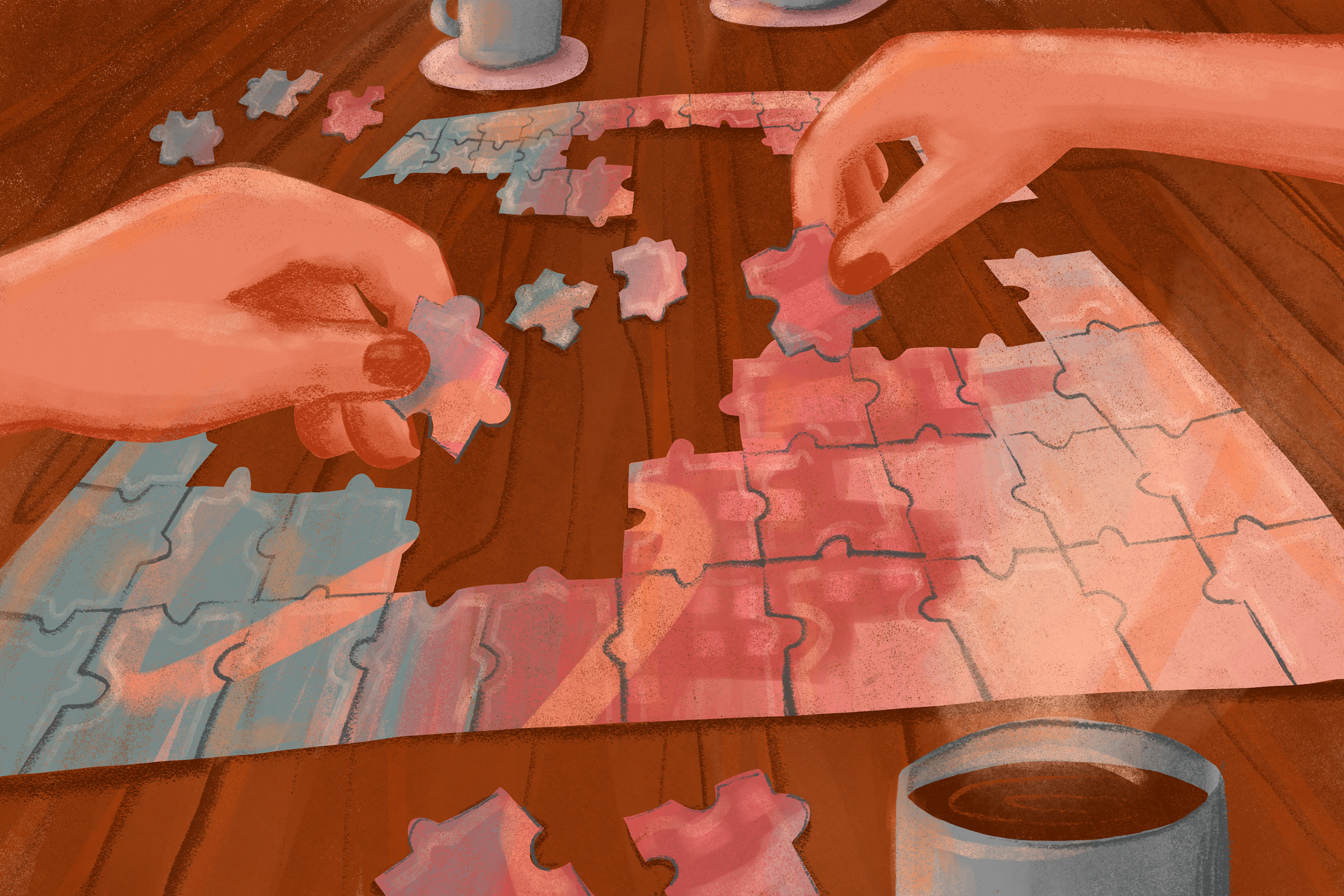Finals are over, reports have been turned in and you’ve probably watched all the Hallmark movies. What are you going to do with yourself and your siblings while you’re sitting at home with nothing to do? It might be time to pull out that 500 piece puzzle you got 6 years ago… it’s definitely better than doom-scrolling Reels until your eyes start to burn.
SOME PUZZLING HISTORY
Jigsaw puzzles are actually older than the United States. In 1760, a London cartographer, John Spilsbury was believed to have created the first jigsaw puzzle. By gluing a map to a flat piece of wood then cutting into the wood pieces following the lines of the countries, he was able to create an activity that was both entertaining and beneficial to teaching geography. Children were not the only ones to benefit from these puzzles because soon adults joined in to putting pieces together. Because these were wood crafted and hand designed, only the very wealthy could afford them.
Today, puzzles are an everyday enrichment activity that anyone can enjoy. During the pandemic, a resurgence of puzzles in the average home became the norm when everyone needed to occupy their minds and hands. In the U.S. alone, 1.8 billion puzzles are sold annually, making it the most popular table game in the nation. With modern technology like 3D printing, it has only become easier to make and distribute puzzles. They can be commissioned by artists to be customized with pictures or drawings. The only limit is your imagination and your patience.
WHY YOU SHOULD TAKE ON PUZZLING
As it turns out, sitting down to do a puzzle is so much more than just a hobby. Here is a list of benefits to doing a puzzle.
Puzzle making can aid in critical thinking and problem solving. Completing a puzzle requires strategic thinking to plan and organize, promoting the strong mental abilities of critical thinking. Engaging in a jigsaw puzzle can serve as a relaxing and meditative activity, helping young adults manage stress and unwind. It is a quiet activity that can be done alone or with others. Young adults can enhance their problem-solving abilities by figuring out how different pieces fit together. Puzzles that are colorful are especially helpful for problem solving and eye-hand coordination. The skills developed while working on jigsaw puzzles, such as spatial reasoning and pattern recognition, can be transferable to other areas of life, including academics and problem-solving in various contexts. Regular engagement with puzzles serves as a form of mental exercise, keeping the brain active and promoting cognitive health. Because who needs calculus when you have a good puzzle?
The process of sorting, organizing, and remembering the placement of pieces contributes to the improvement of short-term memory and works to enhance your concentration. Completing these puzzles requires sustained attention and concentration, which can be beneficial for children, young adults, and really anyone in academic and professional settings. Working on a puzzle teaches the value of patience and persistence as they work towards completing a challenging task. At first, it can be frustrating to work through a puzzle because there are so many pieces laid out in front of you. However, as you work through it, the puzzle becomes a satisfying activity.
Collaborating on a jigsaw puzzle with friends or family members promotes social interaction, communication, and teamwork. You each take a corner or a color or a section of the puzzle, and you work together to take these individual pieces and make a beautiful picture. Completing a challenging puzzle can boost self-esteem and provide a sense of accomplishment, reinforcing the idea that persistence and effort lead to success.
Jigsaw puzzles provide a screen-free alternative to many other forms of entertainment, encouraging those who partake to take a break from digital devices and engage in a more tactile and offline activity. While we do puzzles, our mind enters an almost meditative state, clearing away the stresses and worries from the rest of life.
Jigsaw puzzles are so much more than something that collects dust on your shelf year after year. Within that box is an activity that will benefit your mind, your mood, and your spirit. So instead of watching the new action movie on your TV, take out a puzzle and treat your mind to a good workout in patience and problem solving.
Before you click away…here’s a fun puzzle fact: 1000 piece puzzles don’t necessarily hold 1000 pieces; most are 1008 or 1026 to make the correct shape. It’s even harder than you thought!












